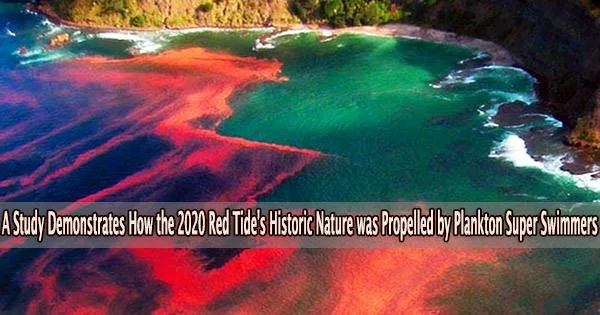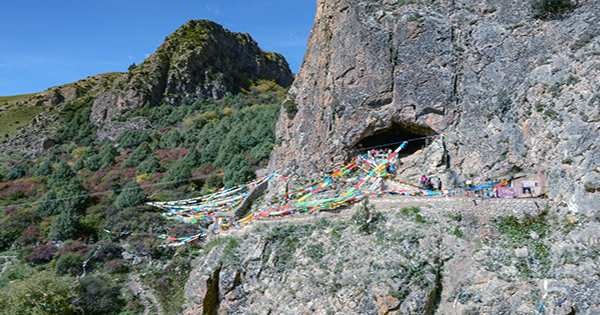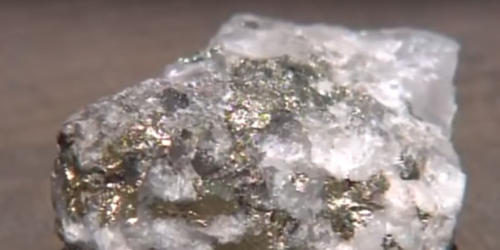In the spring of 2020, Southern California saw a significant red tide occurrence that led to spectacular bioluminescent displays along the coast. Extremely high densities of Lingulodinium polyedra (L. polyedra), a plankton species well-known for its capacity to create a neon blue glow, were the cause of the spectacle. In addition to grabbing the public’s attention and making headlines around the world, the red tide was a dangerous algae bloom.
At the peak of the bloom, potentially harmful toxins were found, and the extreme biomass of the red tide caused the dissolved oxygen levels to almost disappear. This lack of oxygen led to fish die-offs and other destructive impacts on local ecosystems.
For the first time, a study headed by researchers at the Scripps Institution of Oceanography and Jacobs School of Engineering at UC San Diego has identified the dinoflagellate species that was responsible for the unusually dense bloom.
The solution lies in dinoflagellates’ extraordinary swimming prowess, which gives them a competitive edge over other phytoplankton species. The authors claim that this swimming capacity can result in the development of dense blooms, including bioluminescent blooms.
“The idea that vertical swimming gives dinoflagellates a competitive advantage actually goes back more than half a century, but only now do we have the technology to conclusively prove it in the field,” said oceanographer Drew Lucas, senior author of the paper and an associate professor at Scripps Oceanography and the Department of Mechanical and Aerospace Engineering at UC San Diego.
Lucas and former graduate student Bofu Zheng led the work alongside several colleagues in the midst of the red tide event in April and May 2020. Off the coast of San Diego, the researchers took advantage of the chance to place advanced ocean devices, leading to readings that had never been taken before. The team’s findings were published in the August 28, 2023, issue of the Proceedings of the National Academy of Sciences, showcased as the cover story.
The dinoflagellates L. polyedra specifically were shown to be highly mobile, swimming upward during the day to photosynthesize and downward at night to access a deep nutrient pool. This resulted in the intensified ruddy coloration of the water at the surface, hence the term “red tide,” seen most prominently in the afternoon.
A large population of the dinoflagellates was documented making the downward journey at night, though a portion remained near the surface waters, leading to nighttime displays of bioluminescence. The authors found that this vertical migration is what allowed the dinoflagellates to outgrow their non-mobile competitors, including other species of phytoplankton.
In the plankton world, they are Michael Phelps. For comparison, fast-burst swimming in species like bluefin tuna or shortfin mako is around 9–10 body lengths per second, but only for very short periods. Their exceptional swimming allows L. polyedra to dive to cold depths where they can take up nutrients, allowing these organisms to really bloom and explode in population.
Professor Drew Lucas
The study validates a 50-year-old hypothesis originally presented by Scripps Oceanography biological oceanographer Richard “Dick” Eppley. He and colleagues posited that the vertical migration of dinoflagellates was linked to harmful algal blooms, which have been documented off Southern California for at least 120 years. This theory was supported by extensive laboratory study, but it had never been put to the test outdoors before the 2020 event.
As in many dinoflagellate species, L. polyedra is endowed with a pair of flagella whip-like appendages that propel the single-celled organism through the water. In addition to its ability to swim, L. polyedra is remarkably fast, with a maximum swimming speed of up to 10 body lengths per second for almost 24 hours.
“In the plankton world, they are Michael Phelps,” said Lucas, describing the dinoflagellates. “For comparison, fast-burst swimming in species like bluefin tuna or shortfin mako is around 9–10 body lengths per second, but only for very short periods. Their exceptional swimming allows L. polyedra to dive to cold depths where they can take up nutrients, allowing these organisms to really bloom and explode in population.”
The researchers continually measured the physical and biological conditions from the sea surface to the seafloor, down to a depth of 100 meters (300 feet), using the Wirewalker, an autonomous, ocean-wave-powered vertical profiling system created at Scripps Oceanography.
The sensor glides up and down a mooring line connected to a buoy while measuring temperature, salinity, depth, sunshine levels, chlorophyll fluorescence, and nitrate concentrations. It is propelled by wave energy. They also captured near-surface images of the bloom using an Imaging FlowCytobot (IFCB), a robotic microscope installed on an offshore mooring; this site is now part of a larger IFCB network overseen by SCCOOS.
Data and images collected by these instruments validated Eppley’s original hypothesis, showing that indeed L. polyedra descended at dusk, reaching a maximum depth of about 30–40 meters (100–130 feet) after 18 to 24 hours of swimming. Dinoflagellates would absorb nitrate when submerged, which serves as a growth nutrient for plankton, and then surface around noon to photosynthesize while exposed to the most sunlight.
Nitrate concentrations at deep decreased proportionately as phytoplankton biomass increased, or the “bloom,” demonstrating the critical function that swimming phytoplankton play in the emergence of specific forms of red tides. The subsurface vertical migration was significantly less noticeable on cloudy days, indicating that the brightness of the sun is a significant trigger for vertical migration.
Lead author Zheng, now a postdoctoral investigator at Woods Hole Oceanographic Institution (WHOI), was impressed by the many advanced functions of the dinoflagellates, which are comparable in size to the diameter of a human hair.
“These single-celled organisms, namely L. polyedra, are so functionally complex and amazing,” said Zheng. “In addition to their swimming speed, which is far beyond human limits, they can coordinate their behavior according to the day-night cycle by migrating down at night and coming back to the ocean surface during the day; they can produce spectacular bioluminescence; they can photosynthesize; they can even prey on organisms that are smaller than them.”
The researchers also looked at long-term ocean monitoring data captured by the California Cooperative Oceanic Fisheries Investigations (CalCOFI), and long-term mooring data maintained by the Ocean Time-Series Group at Scripps Oceanography to see other consequences from the bloom.
The findings, which were based on an analysis of more than 70 years’ worth of climate data, revealed that the bloom caused physical and chemical conditions in the water column to depart from the usual, demonstrating the possibility that large-scale blooms could change the features of the coastal ocean.
Clarissa Anderson, a co-author of the study and the director of SCCOOS, noted that the study’s use of cutting-edge ocean technologies enabled unmatched measurements of phytoplankton responses to minute changes in the coastal ocean as well as calculations of dinoflagellate nutrient uptake at such minute scales. She also noted the importance of long-term observations as being key to any future efforts to better understand harmful algal blooms.
“The more we understand complex mechanisms that allow a particular species or population of plankton to thrive and persist, the better we can predict runaway events like the 2020 red tide that lasted much longer than theory might dictate,” said Anderson, who is also a biological oceanographer at Scripps Oceanography.
“With longer time series of rapid change in coastal nutrient delivery, circulation, light regimes, and algal toxins, we could build more accurate dynamical models for predicting plankton blooms, including those that turn harmful.”
The authors suggest that by relating phytoplankton behavior to alterations in the coastal environment, it may be possible to predict harmful algal blooms and lessen their consequences by gaining a better understanding of the conditions that give rise to them.
















